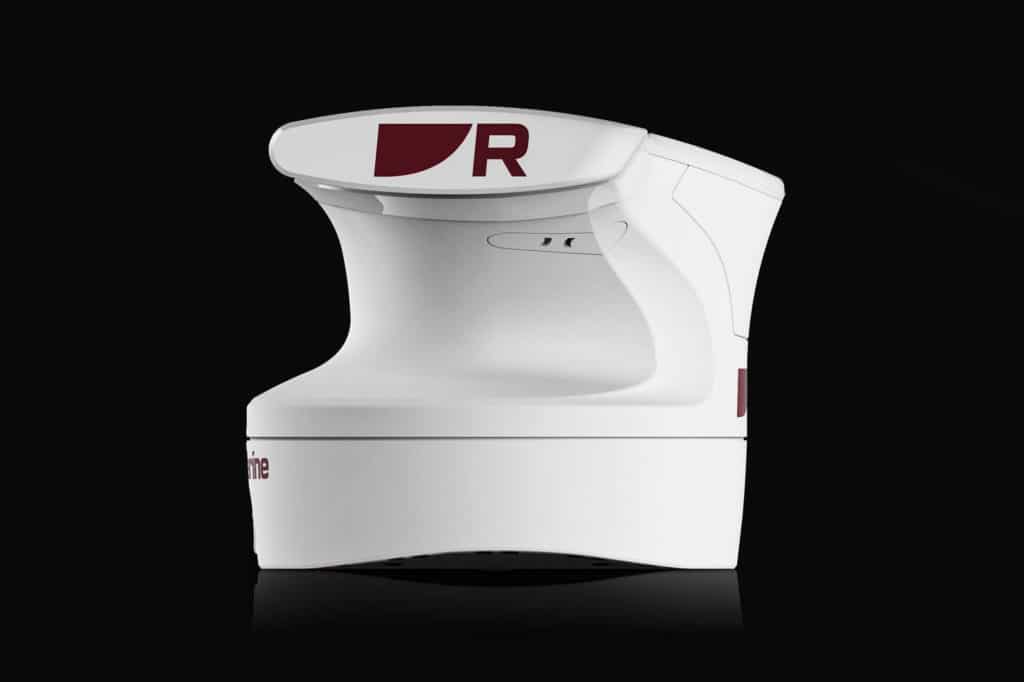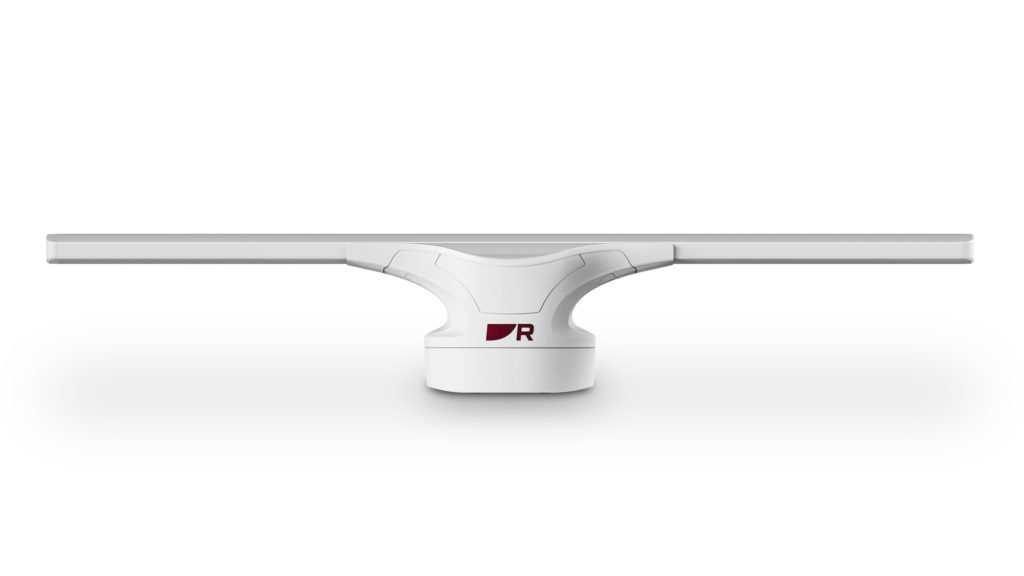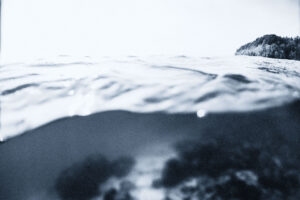
Jim McGowan, Raymarine’s Americas marketing manager, was aboard a Judge 22 center-console with a 110-watt Cyclone Pro radar and 3-foot antenna array. The boat was heading out of a harbor in Dennis, Massachusetts, when McGowan noticed a family enjoying a late-afternoon stroll on a Cape Cod beach. Then, the Cyclone displayed something curious. “I could track all five contacts on screen,” McGowan says, “and I could see the kids’ heads when they were swimming in the water.
“It’s almost scary how much this radar can pick up,” he added.
Doppler-enabled, solid-state radars arrived in 2016, forever changing navigation. The initial rub, however, was power. The first open-array Doppler-enabled radars (by Garmin) transmitted at 40 watts, while the first radome-enclosed Doppler-enabled radar (by Furuno) boasted 25 watts. Both were a far cry from traditional 25-kilowatt magnetron radars.
Over time, other solid-state radars arrived, offering higher power and more features. Raymarine’s Cyclone radars aren’t the first powerful open-array systems to have solid-state architecture and Doppler processing, but Raymarine is the only manufacturer to employ chirp pulse-compression and major features in an open-array platform that can withstand 100-knot winds.
“Cyclone was designed for the premium motor-cruising and hardcore offshore-fishing markets,” McGowan says, adding that the radar is a good match aesthetically for power yachts 35 feet and larger.

Cyclone radars all have Doppler processing. They can be modularly spec’d with 3-, 4- or 6-foot antenna arrays, as well as 55 watts (Cyclone) or 110 watts (Cyclone Pro) of transmitting power. Cyclone has a 72-nautical-mile range, while Cyclone Pro has a 96-nautical-mile range. All Cyclones can operate at 12, 24, 36, 48 or 60 rpm; they weigh 15.4 to 26.5 pounds; and they have horizontal beam widths of 2.83 (3-foot array), 1.99 (4-foot array) or 1.32 degrees (6-foot array), which can be reduced using beam-sharpening to boost performance.
The Cyclone has a distinctive, aviation-inspired geometry, but “it’s not an airfoil,” McGowan says. “It’s not creating lift or a downforce—it’s neutral.” All cabling is hidden in its rotating pedestal, and its stack height is 13.1 inches.
Collectively, these design elements allow Cyclone to cold-start in 100 knots of apparent air. While this means that Cyclone could theoretically survive a mid-grade Category 3 hurricane, “it’s for today’s high-powered vessels that can run at high speeds,” McGowan says.
Cyclone’s chirp technology is like sonar. “Chirp transmissions look like an arch on an oscilloscope,” McGowan says, adding that their frequency rises over the course of each transmission. “The [radar] reflection of the arch is the opposite of the original transmission.” This allows the radar to determine exactly when each pulse starts and ends, yielding better onscreen target separation.
This same “rising” transmission, which is reminiscent of a police siren, also helps the radar’s Doppler processing. The system paints potentially dangerous targets red, benign targets green, and neutral or stationary targets a third color. Users can set displays to split-screen mode, with Doppler-enhanced imagery displayed on one side and standard radar imagery on the other.
While Cyclone’s Doppler technology helps users differentiate among targets, its professional-grade automatic radar plotting aid automatically tracks up to 50 targets within 12 nautical miles of the yacht. This feature is especially useful when negotiating crowded harbors and waterways.
Cyclone radars can spin at variable speeds, from 12 to 60 rpm,
depending on the task. “Sixty rpm meets the demand for tracking fast-moving targets at close range,” McGowan says, adding that faster spins make ARPA operations smoother and more accurate. “It gives more sniffs at the target, and it helps the system maintain a tighter lock on targets.” Conversely, slower spins allow the radar to transmit longer pulses for longer-range work.
The RangeFusion feature bolsters situational awareness by combining long- and short-range pulses into a single, high-resolution radar image. “You can be sitting in a harbor, looking at nearby buoys and coastlines, plus distant islands, ships and storms,” McGowan says. “RangeFusion delivers a usable radar image from the center of the scope to the far end of its range.”
Stereo manufacturers commonly use digital signal processing, which allows algorithms to adjust equalizer settings. Radar engineers can likewise use DSP to “teach” a radar what a specific return looks like. This technology, McGowan says, allows Raymarine to create better operating modes than analog filters. For example, “for Harbor Mode, we trained Cyclone to recognize lots of small contacts,” he says. Raymarine also trained Cyclone to expect glass-covered buildings and suppress their false echoes.
Given that Cyclone was partially created for serious offshore anglers, it comes with Cyclone Bird Mode—which uses chirp capabilities to tweak the radar’s gain and tuning settings—and DSP to differentiate birds from sea clutter.
Similar engineering went into Cyclone’s Buoy Mode. “We trained it to recognize aids to navigation,” McGowan says, explaining that buoys are typically augmented with a radio-frequency reflective tape. “We trained [Cyclone] to look for these signatures.”
Cyclone is compatible with only Raymarine’s Axiom displays, and other radars still deliver more power; however, this latter spec could change. Overall, Raymarine’s Cyclone radar should help boaters get on the fish faster while dodging weather and potentially dangerous navigation situations. And given its ability to spot swimmers, it could help rescue anyone who goes overboard.
Beam-Shaping Arrays
While most radars employ patch-array antennas, Raymarine spec’d Cyclones with dielectric-resonator-antenna arrays. “The difference is the way the signal is fed to the radar,” Raymarine’s Jim McGowan says, adding that while these arrays are more expensive, they offer better control over the shape of the radars’ transmitted beams, bolstering performance.








